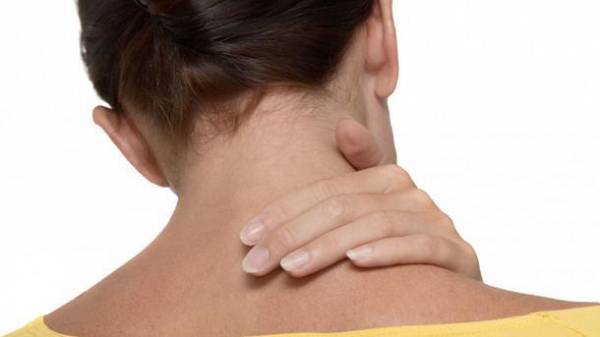
Cervical osteochondrosis is a common disease that is increasingly concerned about young people. The disease is characterized by degenerative-dystrophic changes of intervertebral discs in the cervical spine. In many ways, the development of the pathological process contributes to poor posture, for example, prolonged sitting at the computer. Also a negative role in the development of the disease play a wrong posture, sedentary lifestyle, uncomfortable bed and a genetic predisposition, writes likar.info.
As a rule, cervical osteochondrosis develops slowly, but is prone to progression. In older adults, unlike young and middle-age, cervical osteochondrosis is often combined with uncovertebral arthritis, spondylosis, interspinal osteoarthritis and other degenerative processes.
Reasons
Until now the pathogenesis of cervical degenerative disc disease is not well understood. Today it is established that the disease develops on the background of metabolic abnormalities in the cervical spine. While gradually changing the structure of the intervertebral discs at first, and then the vertebral bodies.
Unlike other osteochondrosis of spine, cervical osteochondrosis is the greatest danger. When this happens the compression of the nerve root extending from the spinal cord. Also with cervical osteochondrosis are compressed blood vessels, which impairs blood flow to the brain. For example, vertebral artery passes through the holes of the vertebrae, and any changes in the structure of the cervical spine lead to a deterioration of blood flow.
Symptoms
The most typical symptoms of cervical degenerative disc disease is pain associated with the pinched nerve endings. This is often back pain, neck and lower back. Most often with cervical osteochondrosis are the following syndromes:
– Radicular syndrome – develops when the pinched nerve endings in the cervical spine. If it felt pain, that irradiiruet from the neck to the scapula, shoulder, forearm and even in the lumbar region. A person can feel tingling, “pins and needles run”, or more severe manifestation of the disease depending on the stage of cervical degenerative disc disease.
Syndrome vertebral artery – one of the manifestations of cervical degenerative disc disease at which a pulse (or burning) headache that is often marked in the occipital and temporal region. As a rule, the vertebral artery syndrome is characterized by constant pain, in rare cases the pain is paroxysmal in nature.
– Irritative-reflectory syndrome – a symptom characterized by a burning pain in the neck and nape. Often this symptom occurs when turning the head, sneezing, coughing and after sleep. The pain may spread in the shoulder and chest.
– Cardiac syndrome – group of symptoms that mimic nature symptoms of angina. Developing cardiac syndrome with irritation of the phrenic nerve roots or the roots of the pectoralis major muscle. In the result, the patient complains of pressing pain in region of heart, who can wear paroxysmal in nature and can last for several hours. Typically, pain is worse during sharp turns of the head, sneezing. When pain attacks ECG not recorded any violations.
With cervical osteochondrosis, there is increased fatigue, and the disease may cause deterioration of sight and hearing.
Treatment
Initially, cervical degenerative disc disease occurs in mild form and does not cause the person significant problems. At this stage there is no need in pharmacological treatment of the disease. Only competent enough preventive measures to prevent complications. It is necessary to review the conditions of labor and way of life.
The best prevention of cervical degenerative disc disease is an active life: physical exercise combined with a healthy diet. At the initial stage of cervical degenerative disc disease doctor may prescribe a special complex of simple exercises.
If possible, avoid lifting heavy weights. A positive impact on health of quitting Smoking. Important preventive measure is the correct posture during sitting and sleeping. Take care of a comfortable chair and bed.
With the progression of cervical degenerative disc disease alone prophylactic measures will not bring relief. In this case, it is advisable to wear a special collars, attending physiotherapy and massage. In the more severe forms of cervical degenerative disc disease is pharmacological therapy with the use of antispasmodics, analgesics, glucocorticosteroids and non-steroidal anti-inflammatory drugs.
In chronic forms of osteoarthritis patients are also prescribed chondroprotectors and vitamins, in particular vitamins of group B.






